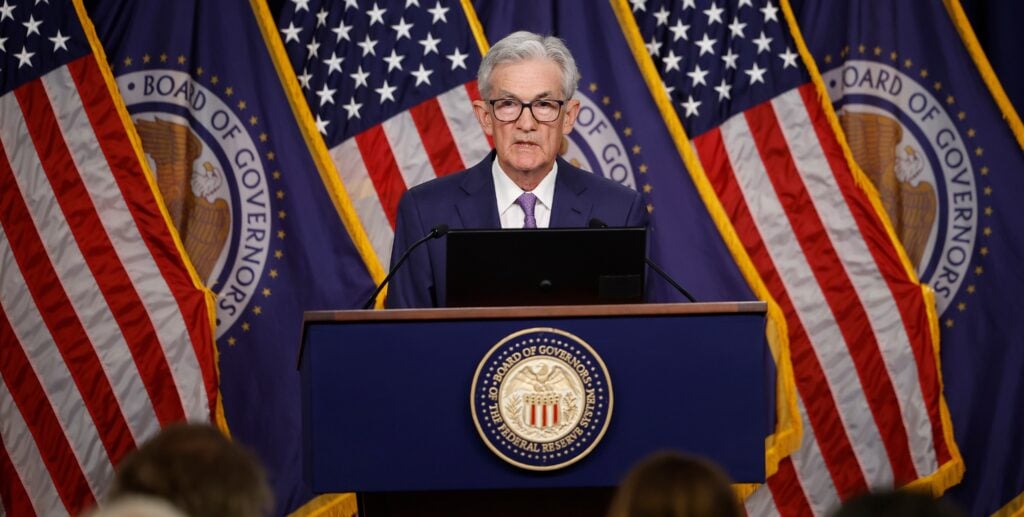Property price growth has diverged across Australia, with values still rising rapidly across much of the country but slowing down overall.
Property prices rose again over July, taking the median national home value to a new record high, according to the latest PropTrack Home Price Index.
But the marginal 0.08% increase in values over the month meant price growth has slowed significantly compared to previous months as housing affordability worsens.
PropTrack senior economist Paul Ryan said this was the smallest monthly increase recorded since prices stopped falling in late 2022.
“National prices continue to increase, but price growth has slowed,” he said. “In part this slowing is seasonal, but it also reflects binding affordability constraints.”
“The slowdown in price growth is not unexpected. It coincides with continued strong listings activity and July is the seasonally weakest month for home price growth."
However, examining price movements on a capital city and regional level reveals key differences across the country, with variances in affordability and supply causing prices to move at different speeds in each market.
How home prices changed around Australia in July
The data shows that half the capitals are still experiencing strong growth while the others are lagging or falling behind.
Prices are growing at a rapid or moderate rate in Perth, Adelaide, Brisbane and Sydney, with subdued or even negative growth in the other capitals.
“All markets continue to see strong housing demand, tight rental markets and rebounding investor activity,” Mr Ryan said.
“But differences in relative affordability and home construction are driving divergence in outcomes across regions.”
“Looking across the capital cities, there is a clear trend that more affordable regions have tended to perform the best, no doubt driven by challenged affordability from the continued high interest rate environment.”
Where home prices are surging
With price growth of 22.8% over the past year, Perth was the strongest performing capital on an annual basis. Prices in the Western Australian capital rose a further 0.88% in July.
A typical Perth house is now worth $790,000, while the median apartment value is $530,000.
Adelaide posted growth of 0.58% in July, with prices up 14.8% annually. Its median home value is now just $33,000 lower than Melbourne’s.
Brisbane was close behind in terms of price growth, with a 0.34% increase in values over the month and a 13.9% rise over the year.
Brisbane's affordable regions have experienced some of the strongest growth recently. This brand new four-bedroom home in Ripley in the south of Ipswich sold in July for $815,000. Picture: realestate.com.au/sold
Brisbane recently overtook Melbourne as Australia’s second-most expensive capital after Sydney.
“Perth, Adelaide and Brisbane continue to outperform,” Mr Ryan said. “These markets have enjoyed relative affordability, but with Brisbane now the second most expensive market, price growth there may slow over the coming period.”
Meanwhile, values in Sydney increased by 0.12% in July, taking the city’s median 6.28% higher than a year ago.
This modern home in Leppington in south western Sydney sold for $2.3 million in July. Picture: realestate.com.au/sold
Prices in more affordable parts of Sydney, including the south west, inner south west and Parramatta regions, have increased by up to 10% over the year, while pricier areas such as the north shore and eastern suburbs are up by between 3% and 5%.
Starr Partners director Daniel Starr said higher interest rates had created more competition in more affordable parts of Sydney.
"It’s all about affordability and interest rates affecting the bottom line," he said. "Two years ago someone looking to purchase for $2 million is now looking at around $1.5 million."
Mr Starr said increased overseas migration had created more competition for rentals, encouraging more first-home buyers to enter the market.
"Buyers are choosing to peg down their price point due to safety and changed borrowing capacities," he said. "It’s creating a compound effect at the bottom end."
Ray White Macarthur Group director Daniel Maurer said houses priced between $800,000 and $1.1 million were being targeted by first-home buyers and performing the best.
“A lot of my buyers aren’t local," he said. "They’re coming from places like Rockdale, Lakemba and Padstow. It seems like they greeting squeezed out and seeing better value out here.”
Where prices are flat or falling
Values in Melbourne declined for a fourth consecutive month, with the citywide median value falling by 0.21%. Prices in Melbourne are now sitting 0.82% lower than a year ago.
Canberra recorded a 0.12% rise in July, with values now up 0.67% over the year.
Higher levels of new home construction in Melbourne, both for houses and apartments, have maintained price stability. Picture: realestate.com.au/sold
“In Melbourne and the ACT, where prices are relatively high, and housing construction progressing more positively than elsewhere, there have seen small declines in prices but broadly unchanged price levels over the past year.”
“Melbourne prices have now declined 1.5% since March, but prices are now back to the level they first hit in August 2021.”
Melbourne’s lagging price growth wasn’t necessarily a bad thing, according to Mr Ryan, with stable prices and an increase in homes for sale making conditions a little easier for buyers.
Get your realEstimate™
Track your property's value and unlock insights and data tailored for property owners.
“This broad price stability has helped buyer and seller confidence in Melbourne, with new property listings in June up 9.1% year-on-year.”
Barry Plant Narre Warren director Nicola Parreira said first home buyers were the most active cohort in the market in Melbourne's south east, while investors had pulled back due to higher interest rates and tax changes affecting profitability.
“Properties over $1.5 million have probably taken a little bit of a hit,” she said. “But that $600,000 to $900,000 bracket where it’s predominantly first-home buyers, interest rate rises haven’t really deterred that market.”
“It feels like every second landlord is selling at the moment. They’re investing interstate or in commercial property.”
Meanwhile, prices in Hobart declined 0.1% in July and 0.9% over the year, while Darwin prices fell 0.31% over the month to take the city’s median value 2.8% lower than a year ago.
What’s next for property prices?
Mr Ryan said prices were expected to keep rising after the typically slower winter period, especially given the boost to buyer’s budgets as incomes rise and tax cuts flow through.
“Key to the outlook over the coming period will be continued strong income growth, which along with the stage three tax cuts, has boosted disposable incomes and borrowing capacities,” he said.
Another key factor is the outlook for interest rates, Mr Ryan said, but a quarterly inflation result in line with expectations meant it was more likely that rates would remain on hold when the RBA next meets in August.
“On balance, we expect further modest rates of home price growth over the coming months as the market moves into the traditional spring selling season,” Mr Ryan said.



















 English (US) ·
English (US) ·